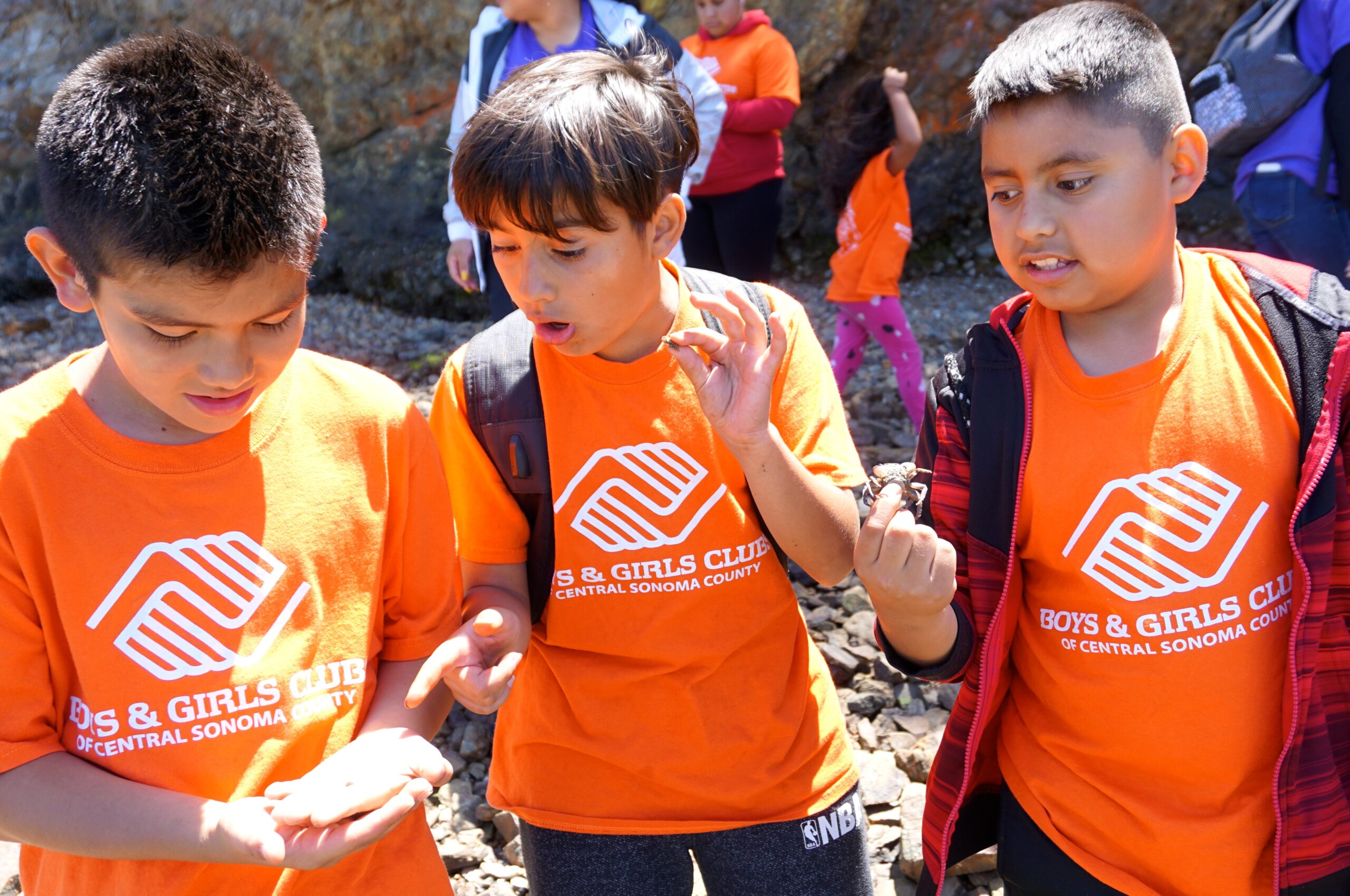During the summer Turtle Island Restoration Network had the opportunity to partner with Boys and Girls Club of Sonoma to integrate science education programs by training counselors and offering free summer programming to the kids.
Our goal for this program was simple: connect underserved students with our National Marine Sanctuaries and stoke their interest in marine sciences.
Teaching the Teachers
Early in the summer, Turtle Island joined the formal Boys and Girls Club training to offer workshops for staff from each of the camp sites. We demonstrated games that integrate science content such as ecosystem interconnections, and are able to be played in any location. We also provided our partner camps with resources to help integrate native ecosystems into songs and games.
Local Field Trips and Lessons
We then partnered with the two Sonoma campuses that had the fewest field trip offerings and changed that by taking students from each campus to nearby redwood forest streams, and a local park on the coast.
To prepare for the trips we visited each camp and provided a series of lessons for different age groups. We used the salmon lifecycle to help connect our inland watersheds with our oceans including our amazing national marine sanctuaries.
Students participated in a coho salmon lifecycle challenge course when we visited their school campuses.
Young Scientists in the Field
During the field trips, we honed our scientific questioning using the BEETLES method, “I notice…I wonder…It reminds me of”. This method helps students scaffold thinking and provokes student-driven inquiry as they explore different ecosystems.
“On the first field trip a student asked if I was a scientist. About 20 students and I dissected the definition of a scientist and which of those characteristics I embodied. While I did not have a lab coat or carry around beakers, I am indeed a scientist, and so are all of you. They all very naturally dove into critical scientific questioning about this skunk fur scattered along the trail, as we transitioned onto our hike.” – Tales from the field
The field trips were filled with many firsts, from the first time chasing a bat ray along the shore, to the first time holding a live crab. We found that even the counselors were having many first times alongside the younger campers.
This Boys and Girls Club counselor was holding her first crab as the younger campers watched and gained confidence to try for themselves.
Thank You!
We are very grateful for the National Marine Sanctuaries’ support of our programming. As a result, we successfully got over 200 young scientists into the field, trained 65 counselors, and supported camp programming for over 300 children.
These programs will be remembered for a lifetime.









